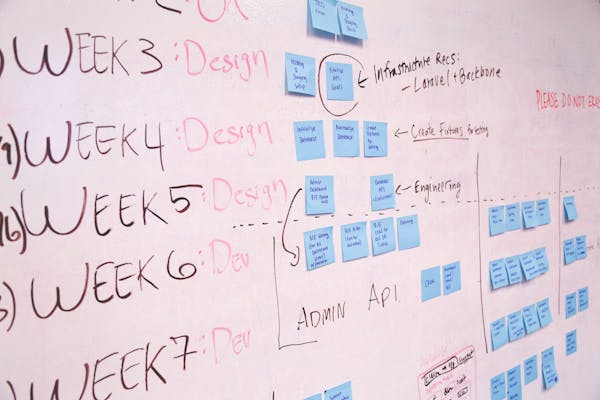Odoo Implementation Phases Explained: A Guide for Saudi Businesses

Introduction: Understanding the Odoo Implementation Journey
Implementing an ERP system like Odoo is a significant undertaking that requires careful planning, execution, and follow-up. For Saudi businesses embarking on this digital transformation journey, understanding the phases of Odoo implementation is crucial for setting realistic expectations and ensuring project success.
This comprehensive guide breaks down the Odoo implementation process into clear, manageable phases, providing Saudi business leaders with insights into what happens at each stage, key milestones, potential challenges, and best practices for success.
Phase 1: Discovery and Planning
Key Activities
The foundation of any successful Odoo implementation begins with thorough discovery and planning:
- Business Process Analysis: Documenting current processes and identifying areas for improvement
- Requirements Gathering: Collecting detailed functional and technical requirements from all departments
- Gap Analysis: Identifying differences between standard Odoo functionality and specific business needs
- Solution Design: Creating a blueprint for the implementation, including module selection and customization needs
- Project Planning: Developing a detailed project plan with timelines, resources, and milestones
Timeframe
For most Saudi businesses, this phase typically takes 2-4 weeks, depending on the organization's size and complexity.
Critical Success Factors
- Involvement of key stakeholders from all departments
- Honest assessment of current processes and pain points
- Clear definition of project scope and objectives
- Realistic timeline and budget expectations
- Executive sponsorship and commitment
Common Challenges in Saudi Context
Saudi businesses often face specific challenges during this phase:
- Balancing traditional business practices with modern ERP methodologies
- Ensuring requirements capture both local regulatory needs (e.g., ZATCA compliance) and business objectives
- Managing expectations across diverse stakeholder groups
Phase 2: System Configuration and Customization
Key Activities
Once planning is complete, the technical implementation begins:
- Base System Setup: Installing and configuring the core Odoo system
- Module Configuration: Setting up selected modules according to business requirements
- Master Data Setup: Creating the foundational data structures (chart of accounts, product categories, etc.)
- Customization Development: Building custom features and reports as needed
- Integration Development: Creating connections with other systems (banking, government portals, etc.)
- Initial Testing: Verifying that configurations and customizations work as expected
Timeframe
This phase typically takes 4-12 weeks, depending on the level of customization required and the number of modules being implemented.
Critical Success Factors
- Following Odoo best practices for configuration
- Minimizing unnecessary customizations
- Regular progress reviews with key stakeholders
- Thorough documentation of all configurations and customizations
- Incremental testing throughout the development process
Saudi-Specific Considerations
For Saudi businesses, special attention should be paid to:
- Arabic language implementation across the system
- Hijri calendar integration where needed
- ZATCA e-invoicing compliance
- Integration with local banking systems
- Compliance with Ministry of Labor regulations in HR modules
Phase 3: Data Migration
Key Activities
Transferring data from legacy systems to Odoo is a critical phase:
- Data Mapping: Creating correspondence between old system data structures and Odoo
- Data Cleansing: Identifying and correcting errors or inconsistencies in existing data
- Migration Tool Development: Creating scripts or tools for data transfer
- Test Migration: Performing trial migrations to identify and resolve issues
- Validation: Verifying the accuracy and completeness of migrated data
- Final Migration: Executing the production data transfer
Timeframe
Data migration typically takes 2-6 weeks, depending on data volume, complexity, and quality of existing data.
Critical Success Factors
- Thorough data cleaning before migration
- Clear decisions on what historical data to migrate
- Multiple test migrations before final transfer
- Comprehensive validation procedures
- Fallback plan in case of migration issues
Common Challenges
Data migration often presents significant challenges:
- Incomplete or inconsistent data in legacy systems
- Complex data transformations required
- Performance issues with large data volumes
- Maintaining data relationships and integrity
Phase 4: Testing and Validation
Key Activities
Thorough testing ensures the system works as expected:
- Unit Testing: Testing individual components and customizations
- Integration Testing: Verifying that different modules work together correctly
- User Acceptance Testing (UAT): Having end users validate that the system meets their requirements
- Performance Testing: Ensuring the system performs well under expected load
- Security Testing: Verifying that appropriate access controls are in place
- Regression Testing: Checking that new changes don't break existing functionality
Timeframe
The testing phase typically takes 2-4 weeks, though it may overlap with other phases.
Critical Success Factors
- Comprehensive test plans covering all business scenarios
- Involvement of actual end users in testing
- Systematic tracking and resolution of issues
- Testing in an environment that closely resembles production
- Sign-off procedures for test completion
Best Practices for Saudi Businesses
Testing should include Saudi-specific scenarios:
- Testing with Arabic data and interfaces
- Validating Hijri date calculations
- Verifying VAT calculations and ZATCA compliance
- Testing integration with local payment gateways and banks
- Validating reports required by Saudi authorities
Phase 5: Training and Change Management
Key Activities
Preparing users for the new system is essential for adoption:
- Training Plan Development: Creating role-based training programs
- Training Material Creation: Developing user manuals, videos, and quick reference guides
- User Training: Conducting hands-on training sessions for end users
- Administrator Training: Specialized training for system administrators
- Change Management: Communication and activities to facilitate adoption
- Knowledge Transfer: Ensuring internal teams can support the system
Timeframe
Training typically takes 1-3 weeks, depending on the number of users and modules implemented.
Critical Success Factors
- Role-specific training focused on daily tasks
- Hands-on practice with realistic scenarios
- Bilingual training materials (Arabic and English)
- Clear communication about system benefits and changes
- Identifying and empowering system champions
Cultural Considerations in Saudi Arabia
Effective training in Saudi Arabia should consider:
- Language preferences of different user groups
- Potentially separate training sessions for male and female staff
- Alignment with prayer times and work schedules
- Respect for hierarchical structures in organizations
Phase 6: Go-Live and Cutover
Key Activities
The transition to the new system requires careful planning:
- Go-Live Planning: Detailed plan for transitioning to the new system
- Final Data Migration: Transferring up-to-date data from legacy systems
- Cutover Activities: Step-by-step process for switching to Odoo
- Go-Live Support: Intensive support during the initial days of operation
- Issue Resolution: Rapid response to any problems that arise
- Performance Monitoring: Tracking system performance under real-world conditions
Timeframe
The go-live phase typically takes 1-2 weeks, including preparation and immediate post-launch support.
Critical Success Factors
- Detailed cutover plan with clear responsibilities
- Realistic timeline allowing for unexpected issues
- Adequate support resources during the transition
- Clear criteria for go/no-go decisions
- Backup and rollback procedures in case of major problems
Go-Live Strategies
Different approaches can be used depending on business needs:
- Big Bang: Switching all operations to Odoo simultaneously
- Phased Approach: Implementing modules or functions sequentially
- Parallel Running: Operating both old and new systems simultaneously for a period
For most Saudi businesses, a phased approach often provides the best balance of risk management and implementation speed.
Phase 7: Post-Implementation Support and Optimization
Key Activities
After go-live, ongoing support and optimization are essential:
- Hypercare Support: Intensive support immediately following go-live
- Issue Management: Tracking and resolving any system issues
- Performance Tuning: Optimizing system performance based on actual usage
- User Feedback Collection: Gathering input for system improvements
- Process Refinement: Adjusting processes based on real-world experience
- Additional Training: Providing supplementary training as needed
Timeframe
The initial post-implementation phase typically lasts 1-3 months, followed by ongoing support and periodic optimization.
Critical Success Factors
- Structured approach to issue prioritization and resolution
- Regular review meetings to assess system performance
- Continuous user education and support
- Proactive monitoring of system health
- Documented procedures for common support scenarios
Continuous Improvement
The most successful implementations view go-live as just the beginning:
- Regular system updates to access new features
- Periodic process reviews to identify optimization opportunities
- Gradual implementation of additional modules as the business grows
- Ongoing user training to maximize system utilization
Typical Timeline for Odoo Implementation in Saudi Arabia
While every implementation is unique, here's a typical timeline for a mid-sized Saudi business:
- Discovery and Planning: 2-4 weeks
- System Configuration and Customization: 6-10 weeks
- Data Migration: 3-5 weeks (may overlap with configuration)
- Testing and Validation: 2-4 weeks
- Training and Change Management: 2-3 weeks
- Go-Live and Cutover: 1-2 weeks
- Post-Implementation Support: 4-12 weeks
This results in a total implementation time of approximately 4-6 months for a comprehensive Odoo deployment.
Factors Affecting Implementation Timeline
Several factors can influence how long an Odoo implementation takes:
- Business Size and Complexity: Larger organizations with more complex processes typically require longer implementations
- Scope of Implementation: The number of modules being implemented affects timeline
- Customization Requirements: Extensive customizations extend the development phase
- Data Quality and Volume: Poor data quality or large data volumes complicate migration
- Resource Availability: Dedicated internal resources can accelerate implementation
- Decision-Making Speed: Quick decisions on configurations and customizations keep the project moving
Working with an experienced Odoo partner who understands the Saudi market can help mitigate these factors and optimize the implementation timeline.
Conclusion: Keys to Successful Odoo Implementation in Saudi Arabia
Implementing Odoo in Saudi Arabia requires careful attention to both universal ERP implementation best practices and local business and regulatory requirements. By understanding the phases outlined in this guide and preparing appropriately for each, Saudi businesses can maximize their chances of a successful implementation.
The most successful implementations share common characteristics:
- Clear objectives and scope definition
- Strong executive sponsorship and stakeholder engagement
- Realistic timelines and resource allocation
- Attention to Saudi-specific requirements and cultural factors
- Partnership with experienced Odoo consultants familiar with the Saudi market
- Commitment to user training and change management
- Focus on continuous improvement post-implementation
At ToDoOps, we specialize in guiding Saudi businesses through each phase of Odoo implementation. Our certified consultants combine technical expertise with deep understanding of the Saudi business environment to ensure your Odoo project delivers maximum value.
Contact us today for a free consultation to discuss your Odoo implementation needs and how we can help you navigate each phase successfully.
Tags:
Considering Odoo for Your Business?
Get a free, personalized consultation for your business needs from our certified experts.
Book Free Consultation Now

